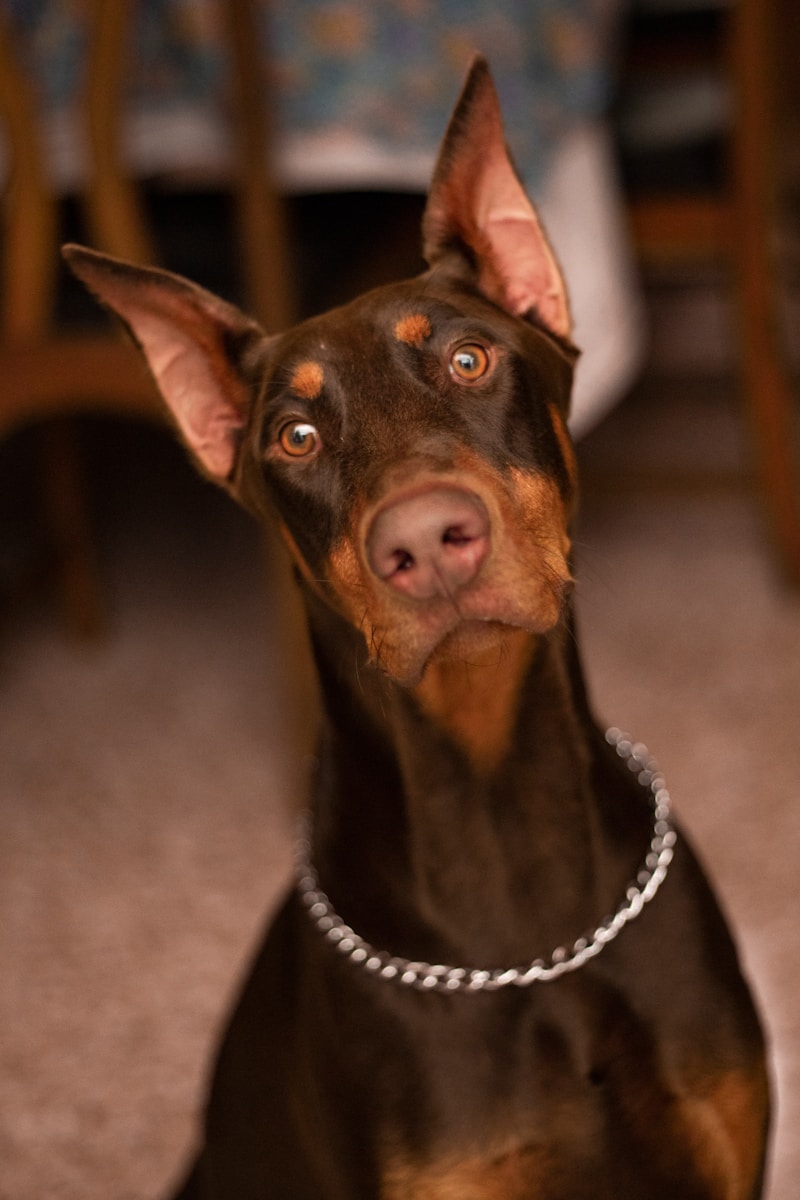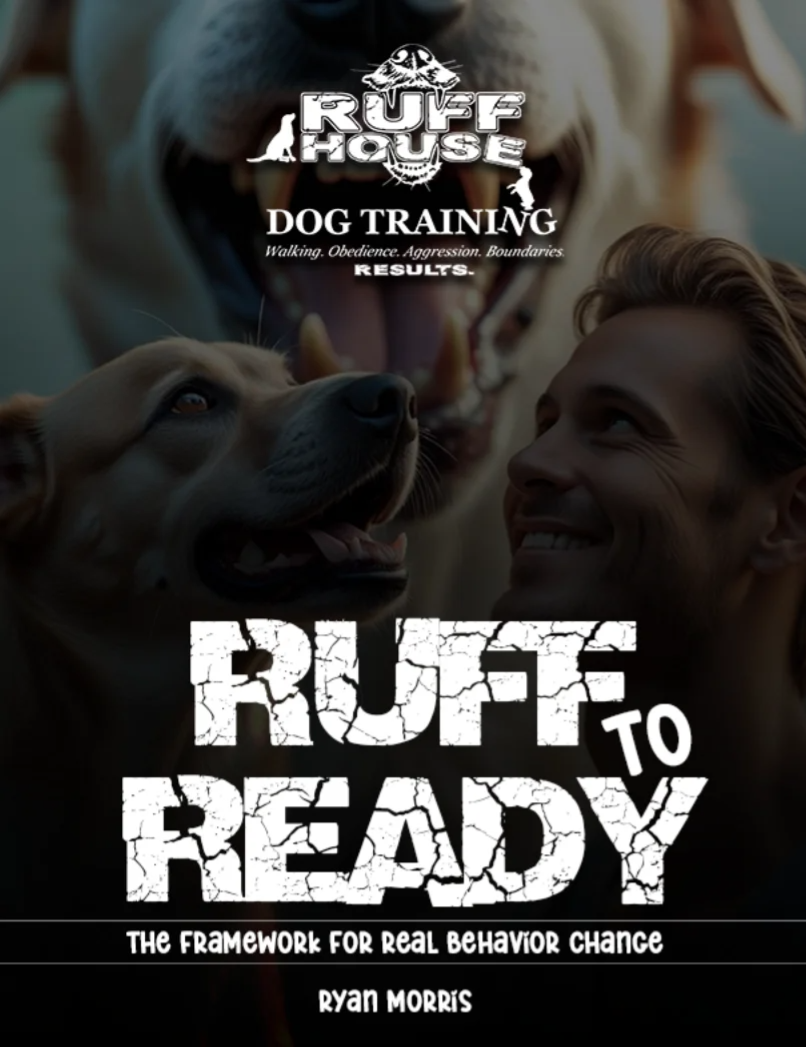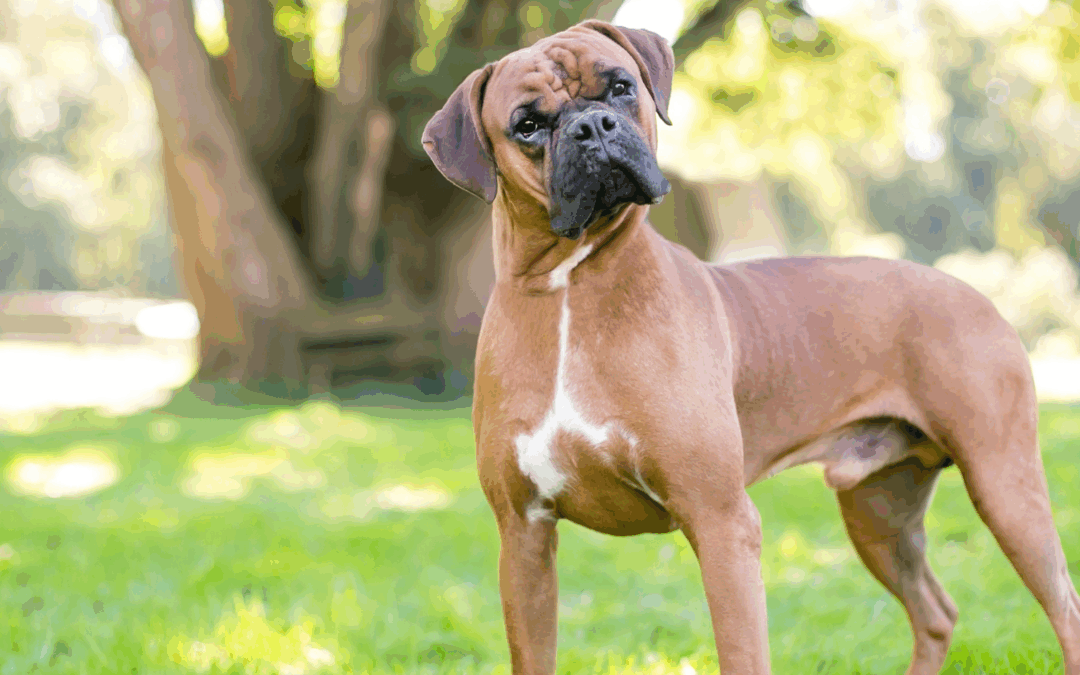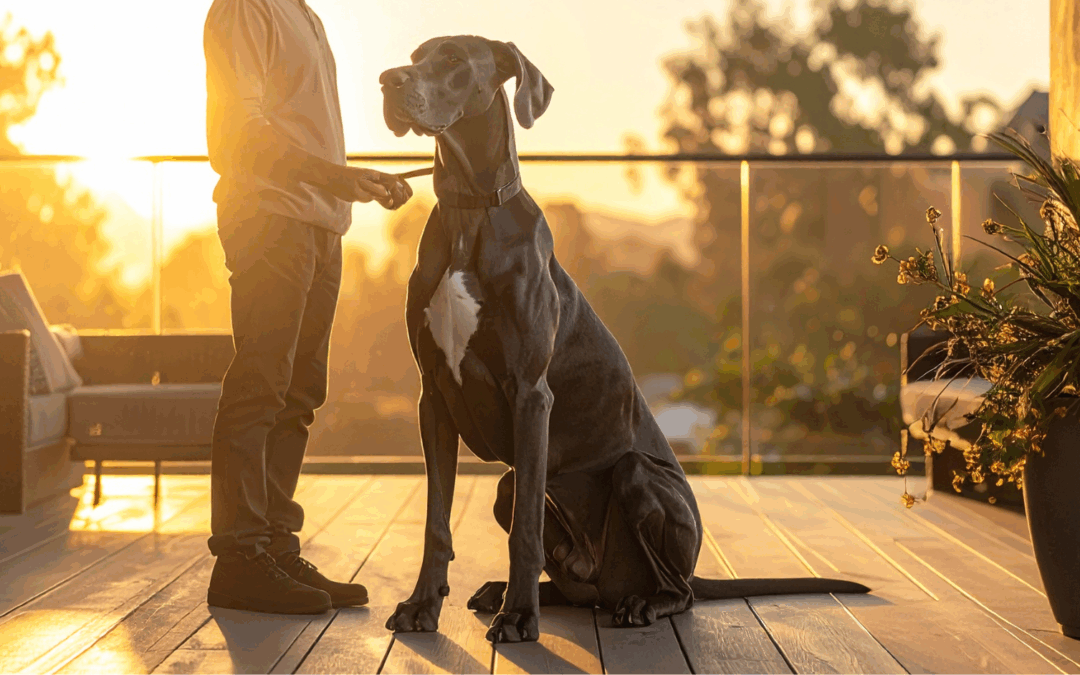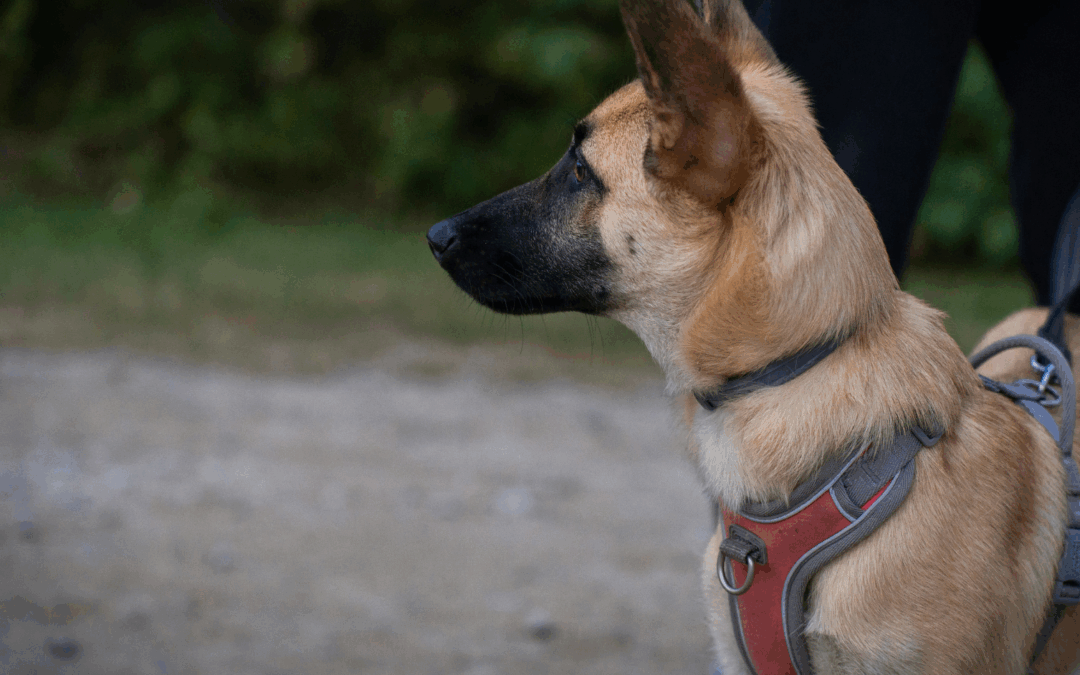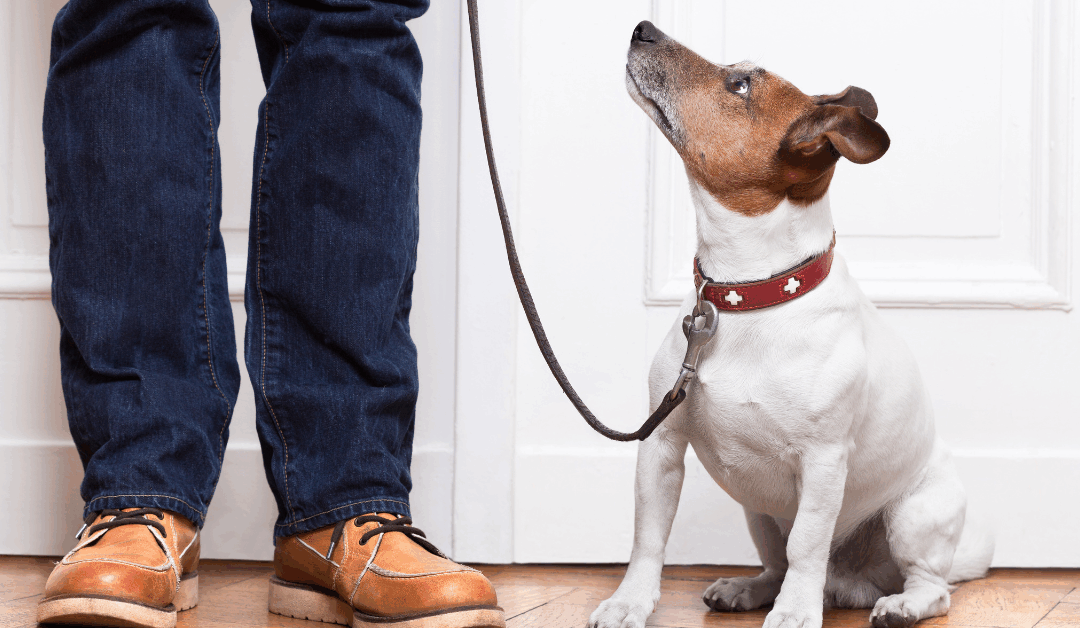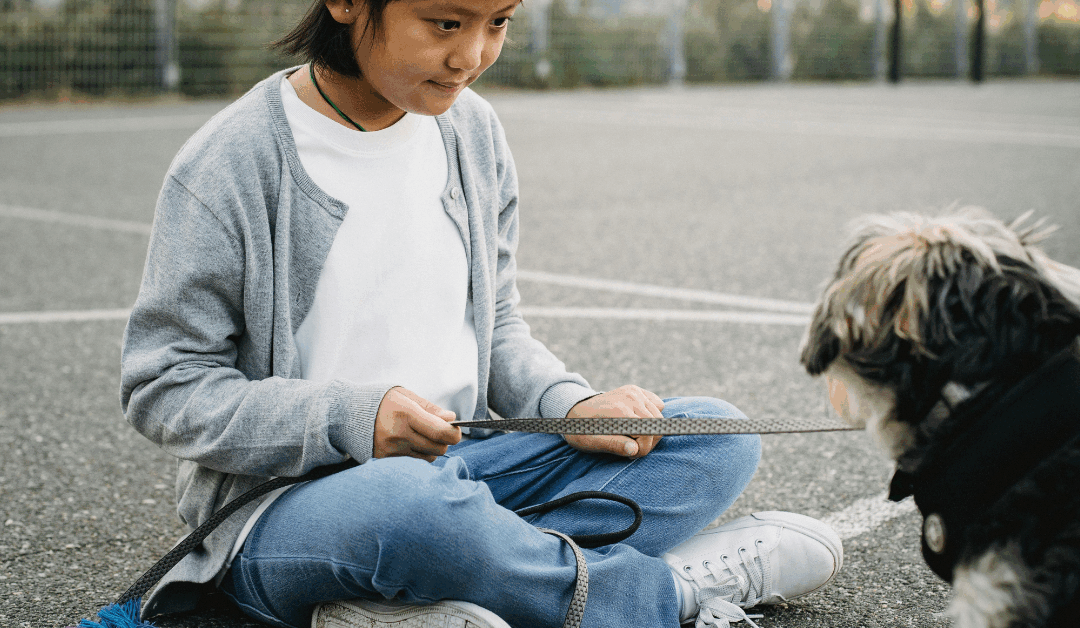Your canine companion locks eyes with you across the room, maintaining that unwavering stare that seems to pierce right through your soul. Sound familiar? If you’ve ever wondered why your dog watches your every move with such intensity, you’re not alone. This behavior puzzles countless pet parents who find themselves asking the same question: Why is my dog staring at me?
Understanding your dog’s stare requires looking beyond the surface. Dogs use eye contact as a primary form of communication, and that intense gaze often carries a specific message. Whether it’s a soft, loving look or a more focused stare, your pup is trying to tell you something important.
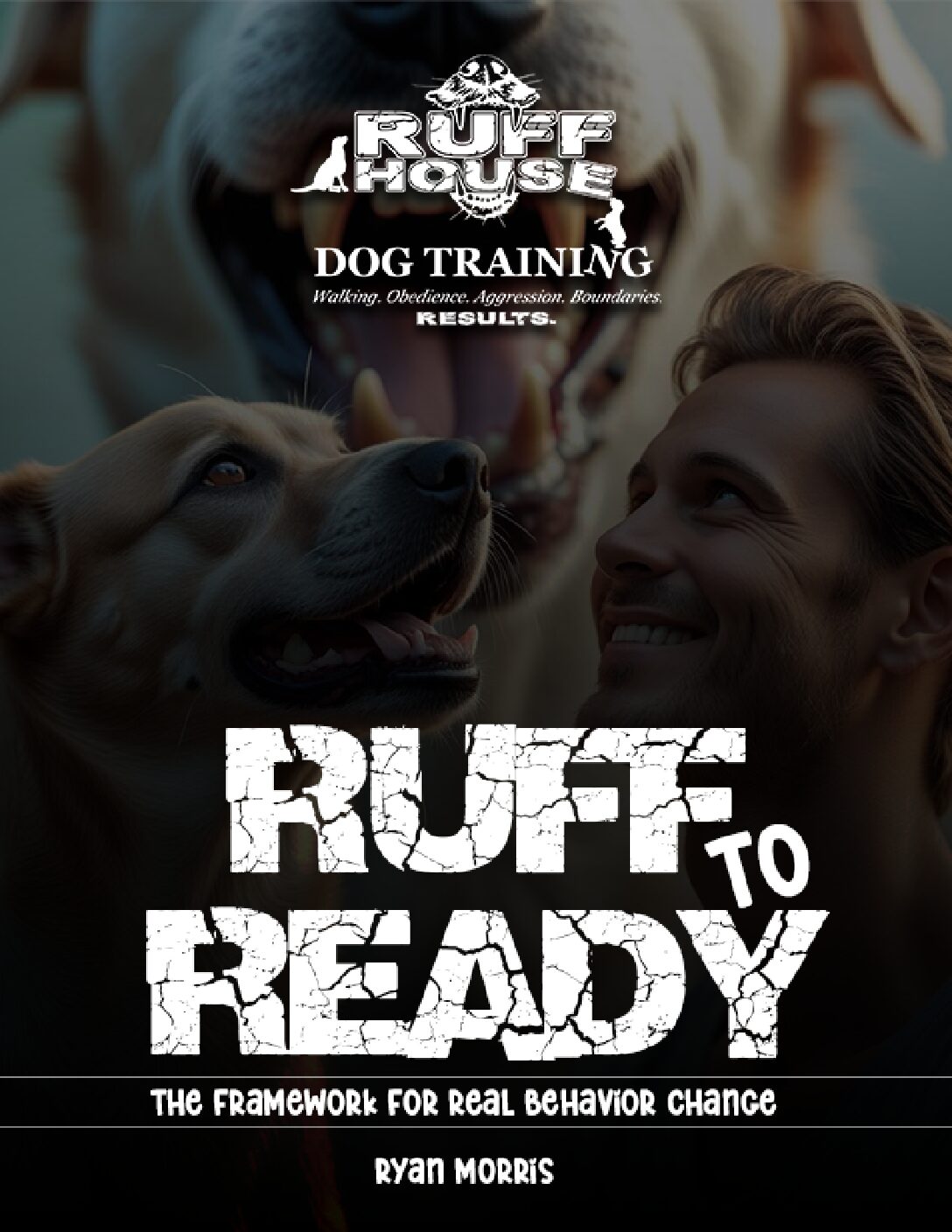
Unlock Real Behavior Change – Download Your Free Guide Now
"*" indicates required fields
The reasons why dogs stare at us can range from expressions of pure affection to requests for basic needs like food or enough exercise. Sometimes that stare signals a desire for attention, while other instances might indicate underlying behavioral or health concerns that require your immediate attention.
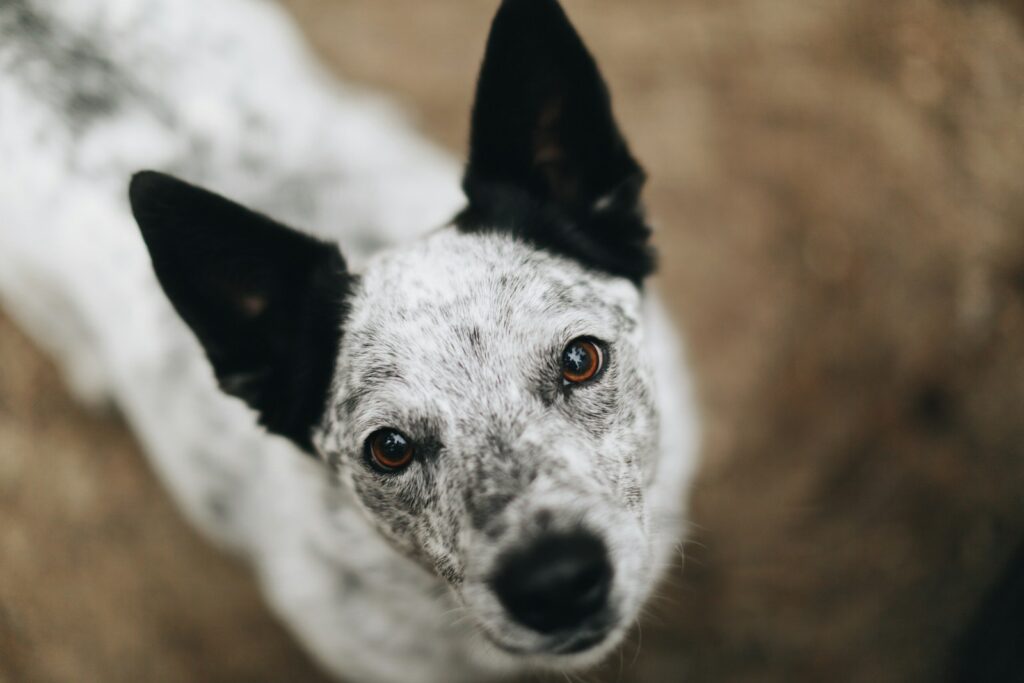
Photo by Giorgio Trovato on Unsplash
The Science Behind Canine Eye Contact
Dogs and humans share a unique bond when it comes to eye contact. Unlike most animals that view direct staring as a threat, domestic dogs have evolved to use eye contact as a communication tool with their human families. This remarkable adaptation makes dogs the only non-primate species known to seek eye contact with humans naturally.
When your dog stares at you, their brain releases oxytocin—the same “love hormone” that bonds parents with their children. This chemical reaction strengthens the emotional connection between you and your furry friend, explaining why that loving gaze feels so meaningful.
Research shows that dogs can read human facial expressions and often mirror our emotions. Your dog’s stare might be their way of gauging your mood or seeking emotional connection. This sophisticated form of communication demonstrates just how deeply dogs understand human behavior and social cues.
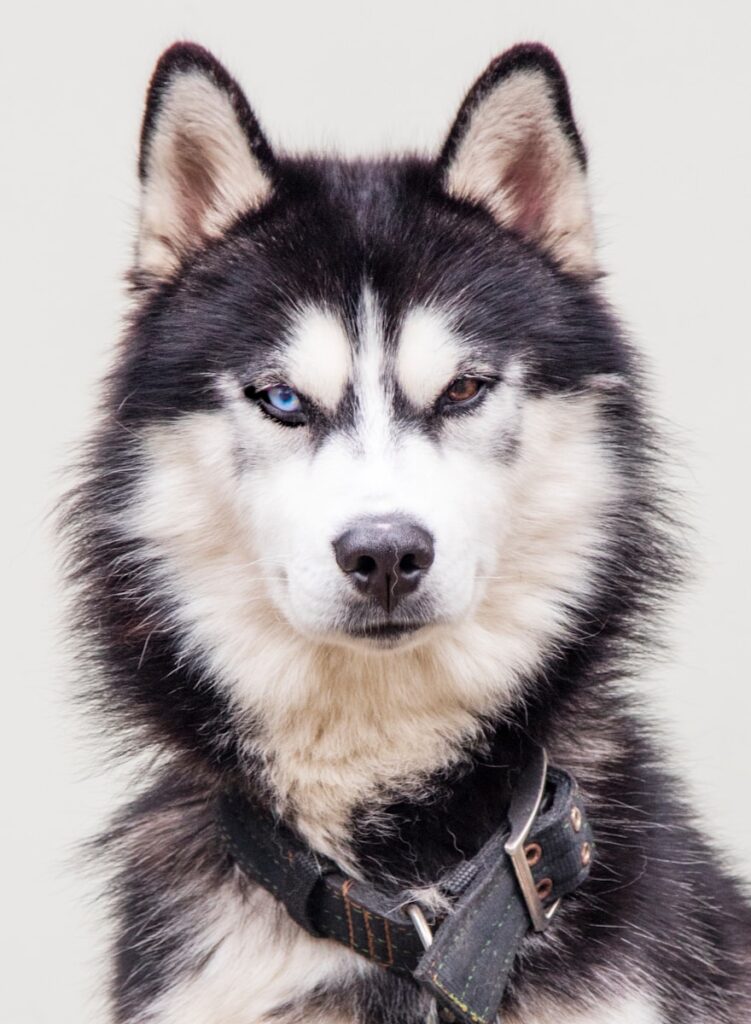
Photo by martin bennie on Unsplash
A Few Possible Reasons Your Dog Is Staring at You
Your Dog Loves You
The most heartwarming reason for your dog’s stare is simple love. Your dog loves you. A soft stare accompanied by a relaxed posture typically indicates your dog is showing affection. This loving gaze often occurs when you’re sitting together quietly or during calm moments throughout the day.
Dogs express affection differently than humans, and prolonged eye contact represents one of their most sincere forms of emotional expression. If your dog’s body language appears relaxed—with soft eyes, loose posture, and perhaps a gently wagging tail—they’re likely just enjoying your presence and strengthening your bond.
They Want Something From You
Your dog has learned that staring gets results. Whether they want food, water, a walk, or access to their favorite toy, that focused stare often precedes getting what they desire. This learned behavior becomes reinforced each time you respond to their visual requests.
Pay attention to the context of the stare. Does it happen around mealtime? Near the door when they need to go outside? Next to their empty water bowl? These situational cues help decode what your dog is trying to communicate through their intense gaze.
They’re Seeking Attention
Dogs crave interaction with their human families, and staring serves as an effective attention-seeking strategy. If your dog feels ignored or wants to engage in play, they’ll often use direct eye contact to capture your focus and initiate interaction.
This behavior becomes more pronounced in dogs that don’t receive enough mental stimulation or physical exercise. A bored dog will stare more frequently, hoping to encourage the dog owner to provide entertainment or engagement activities.
They’re Reading Your Body Language
Your dog studies you constantly, learning to predict your next move through careful observation. They watch for subtle changes in your posture, facial expressions, and movement patterns that signal upcoming activities like walks, meals, or departure from the house.
This attentive behavior demonstrates your dog’s intelligence and their deep understanding of your daily routines. They’ve learned that certain human behaviors predict exciting events, so they maintain visual contact to catch these important cues.
They’re Confused or Uncertain
Although you might be able to decipher your own dog’s behaviors, it can sometimes be trickier to understand what an unfamiliar dog is trying to communicate.
Sometimes your dog stares because they’re trying to understand a situation or your expectations. New environments, unfamiliar sounds, or changes in routine can prompt increased staring as your dog seeks guidance or reassurance from you.
Dogs look to their owners for leadership and direction, especially in uncertain situations. If your dog appears tense while staring, with a stiff posture or worried expression, they might be seeking your guidance about how to respond to their current circumstances.
They’re Showing Signs of Anxiety
Excessive staring combined with other behavioral changes might indicate anxiety or stress. Dogs experiencing separation anxiety, fear, or uncertainty often maintain intense eye contact with their owners as a coping mechanism or plea for comfort.
Look for additional signs like panting, restlessness, whining, or destructive behavior. If your dog’s staring seems compulsive or occurs alongside these other symptoms, they might be experiencing emotional distress that requires attention.
They’ve Learned It Gets Them What They Want
Smart dogs quickly discover that staring influences human behavior. If you consistently respond to your dog’s stare by providing food, attention, or activities, you’ve inadvertently trained them to use this behavior as a communication tool.
While this isn’t necessarily problematic, understanding this learned behavior helps you respond appropriately. You can choose when to acknowledge the stare and when to ignore it, depending on whether you want to encourage or discourage the behavior.
They’re Experiencing Health Issues
Sometimes, persistent staring indicates underlying health problems, particularly in older dogs. Cognitive dysfunction, vision problems, or neurological issues can cause changes in normal staring behavior patterns.
If your dog’s staring behavior suddenly changes—becoming more intense, frequent, or accompanied by other concerning symptoms—consult your veterinarian. Sudden behavioral changes often signal health issues that require professional evaluation.
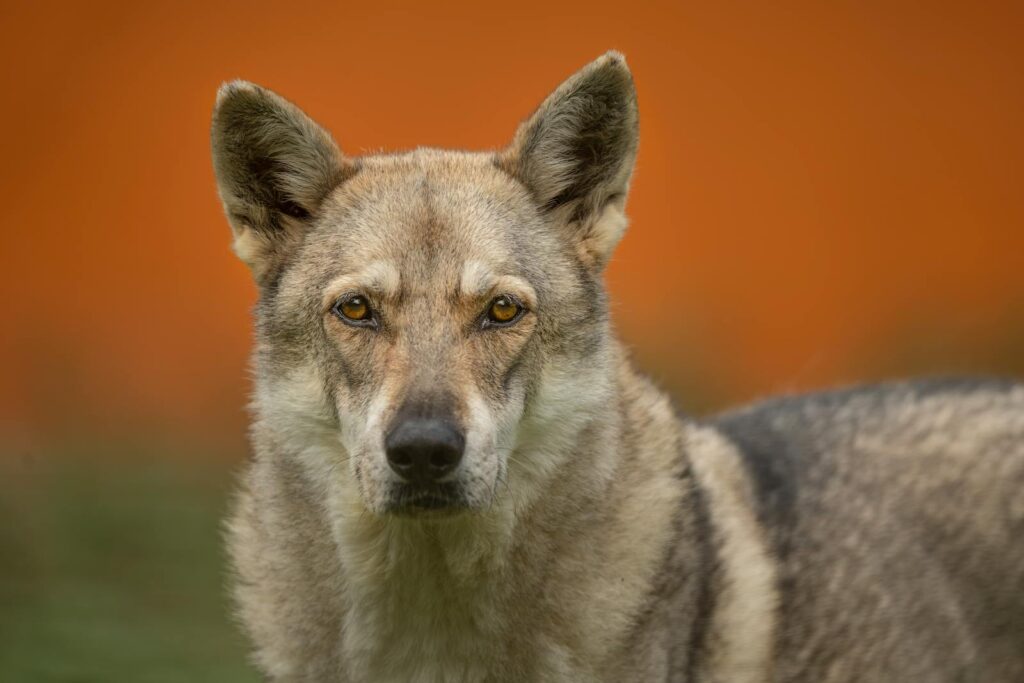
Photo by Miguel Cuenca on Pexels
Understanding Different Types of Dog Stares
The Soft Stare
A loving gaze characterized by relaxed facial muscles, soft eyes, and comfortable body language indicates contentment and affection. This gentle stare often occurs during quiet bonding moments and represents your dog’s way of showing love and trust.
The Hard Stare
An intense, focused stare with tense body language might signal dominance, aggression, or extreme focus on something they want. Hard stares typically involve direct eye contact without blinking, rigid posture, and potential signs of stress or arousal.
The Alert Stare
When your dog stares while maintaining an upright, attentive posture, they’re likely focused on something in their environment or waiting for direction from you. This alert stare shows engagement and readiness to respond to your cues.
The Anxious Stare
Staring accompanied by stress signals like panting, whining, or restless behavior indicates anxiety or worry. Dogs experiencing fear or uncertainty often maintain eye contact while displaying other signs of emotional distress.
When Dog Staring Becomes Problematic
While most dog staring is normal communication, certain situations require attention from pet parents. Excessive staring that interferes with daily activities, aggressive staring directed at other dogs or people, or sudden changes in staring behavior warrant closer examination.
Compulsive staring that seems disconnected from environmental triggers might indicate obsessive-compulsive behaviors or neurological issues. If your dog stares at walls, shadows, or empty spaces for extended periods, seek professional help from a veterinarian or certified animal behaviorist.
Aggressive staring poses safety concerns, especially around children or other pets. Dogs displaying hard stares combined with stiff posture, raised hackles, or growling require immediate intervention from a professional dog trainer experienced in behavioral modification.
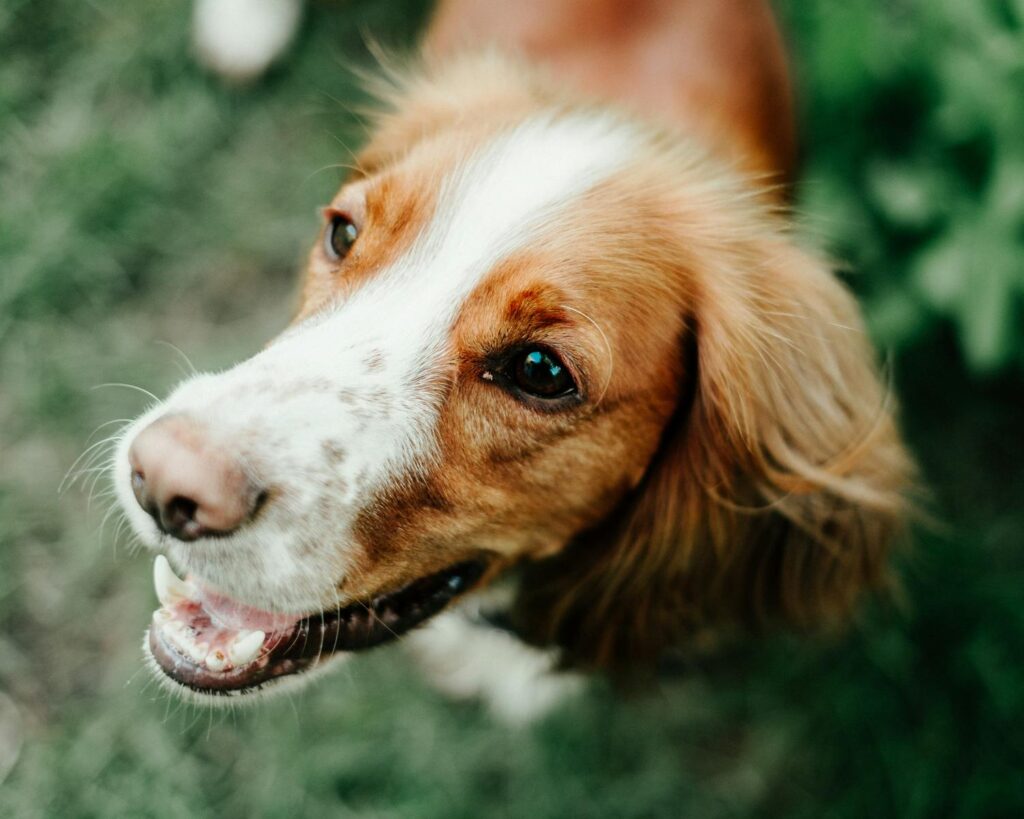
Photo by Harry Cooke on Pexels
How to Respond to Your Dog’s Stare
Acknowledge Appropriate Staring
When your dog stares for legitimate reasons—like needing to go outside or expressing affection—respond appropriately to reinforce healthy communication. This helps maintain your bond while encouraging good behavioral patterns.
Ignore Attention-Seeking Stares
If your dog stares simply to get attention when you’re busy, avoid making eye contact or responding immediately. Wait until they display calm behavior before providing attention, which teaches them more appropriate ways to request interaction.
Redirect Problematic Staring
For dogs that stare excessively or inappropriately, redirect their attention to alternative behaviors. Provide mental stimulation through puzzle toys, training exercises, or interactive games that engage their minds and reduce fixation behaviors.
Use Balanced Training Methods (From Ruff House Dog Training!)
Ruff House Dog Training can come up with a training plan. This may help your dog respond to verbal cues instead of relying solely on staring to communicate needs. Teaching commands like “sit” for attention or “outside” for bathroom breaks provides clearer communication channels for both of you.
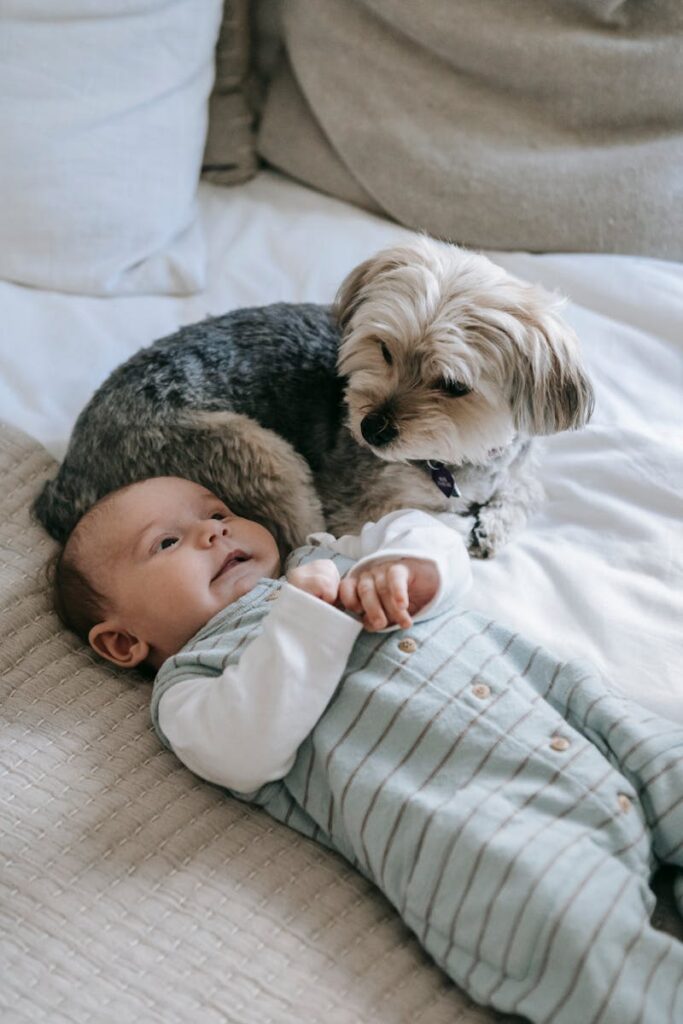
Photo by Sarah Chai on Pexels
Practical Tips for Managing Dog Staring
Ensure your dog receives adequate physical exercise and mental stimulation to reduce attention-seeking behaviors. A tired dog is generally a well-behaved dog, and proper exercise can significantly decrease problematic staring.
Establish consistent routines for feeding, walks, and play time. Predictable schedules reduce your dog’s need to stare for basic needs since they’ll know when these activities typically occur.
Provide environmental enrichment through rotating toys, puzzle feeders, and new experiences. Mental stimulation helps prevent boredom-related staring and keeps your dog’s mind engaged in productive activities.
Create designated spaces where your dog can observe household activities without feeling compelled to stare at family members constantly. Comfortable bedding in main living areas allows your dog to feel included while maintaining appropriate boundaries.
Building a Stronger Bond Through Understanding
Recognizing the meaning behind your dog’s stare strengthens your relationship and improves communication between you and your canine companion. Each stare represents an attempt at inter-species communication that deserves thoughtful consideration.
Take time to observe your dog’s complete body language when they stare, not just their eyes. Understanding the full context of their communication attempts helps you respond more effectively to their needs and emotions.
Remember that your dog’s stare often reflects their deep emotional connection to you. Even when the behavior requires management or redirection, approach it with patience and understanding rather than frustration or punishment.

Take the Next Step Toward Better Communication | Why Is My Dog Staring At Me?
Understanding why your dog stares at you opens the door to deeper communication and stronger bonds with your canine companion. Whether that gaze expresses love, requests attention, or signals underlying concerns, recognizing these communication attempts helps you respond as a more informed and caring pet parent.
If your dog’s staring behavior concerns you or seems excessive, don’t hesitate to seek professional guidance at Ruff House Dog Training. A qualified dog trainer or animal behaviorist can help you understand your specific dog’s communication style and develop appropriate responses to strengthen your relationship.
The investment in understanding your dog’s behavior pays dividends in the form of a happier, more harmonious household where both human and canine family members feel understood and valued. Your dog’s stare isn’t just a behavior to manage—it’s a window into their thoughts, emotions, and needs that deserves your attention and respect.
